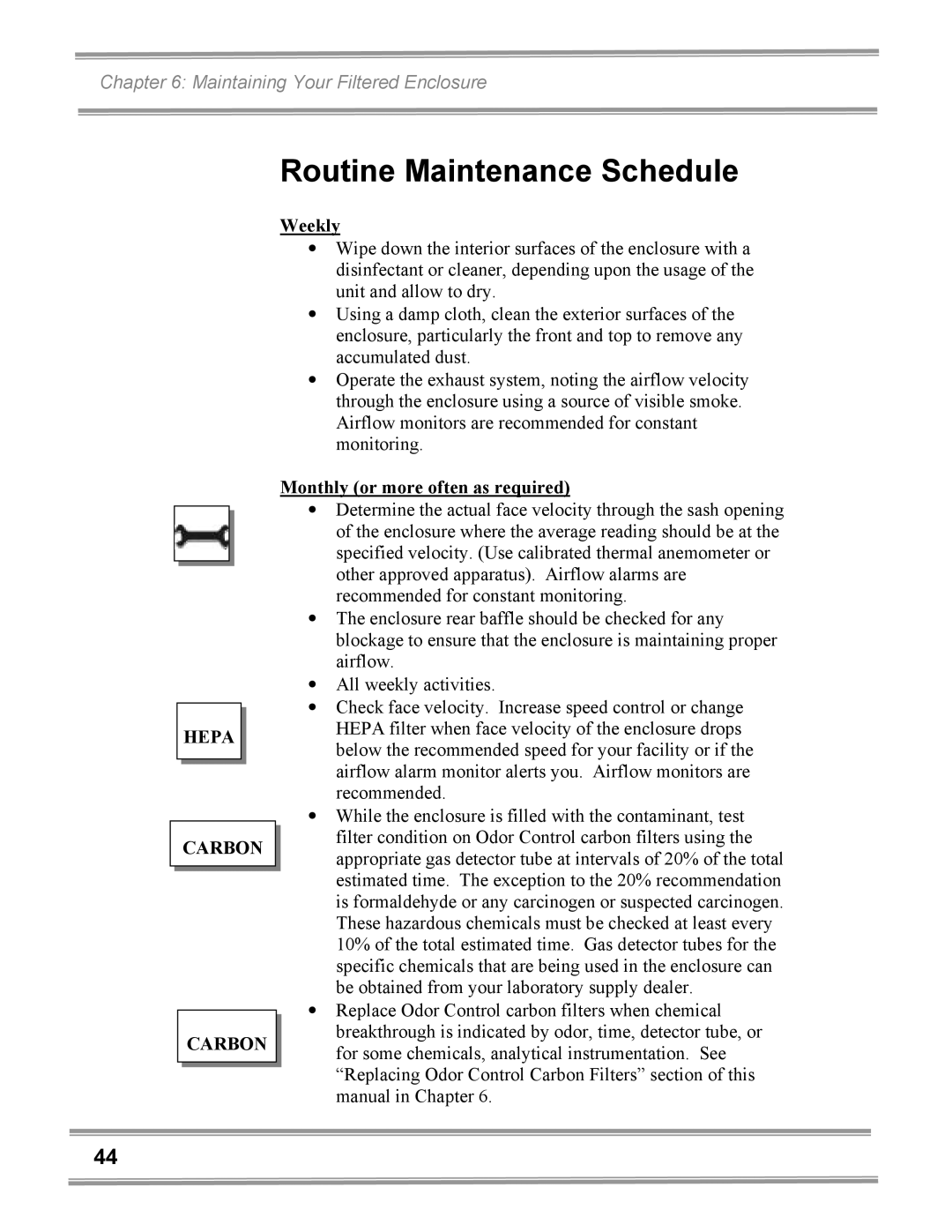
Chapter 6: Maintaining Your Filtered Enclosure
Routine Maintenance Schedule
HEPA
CARBON
CARBON
Weekly
•Wipe down the interior surfaces of the enclosure with a disinfectant or cleaner, depending upon the usage of the unit and allow to dry.
•Using a damp cloth, clean the exterior surfaces of the enclosure, particularly the front and top to remove any accumulated dust.
•Operate the exhaust system, noting the airflow velocity through the enclosure using a source of visible smoke. Airflow monitors are recommended for constant monitoring.
Monthly (or more often as required)
•Determine the actual face velocity through the sash opening of the enclosure where the average reading should be at the specified velocity. (Use calibrated thermal anemometer or other approved apparatus). Airflow alarms are recommended for constant monitoring.
•The enclosure rear baffle should be checked for any blockage to ensure that the enclosure is maintaining proper airflow.
•All weekly activities.
•Check face velocity. Increase speed control or change HEPA filter when face velocity of the enclosure drops below the recommended speed for your facility or if the airflow alarm monitor alerts you. Airflow monitors are recommended.
•While the enclosure is filled with the contaminant, test filter condition on Odor Control carbon filters using the appropriate gas detector tube at intervals of 20% of the total estimated time. The exception to the 20% recommendation is formaldehyde or any carcinogen or suspected carcinogen. These hazardous chemicals must be checked at least every 10% of the total estimated time. Gas detector tubes for the specific chemicals that are being used in the enclosure can be obtained from your laboratory supply dealer.
•Replace Odor Control carbon filters when chemical breakthrough is indicated by odor, time, detector tube, or for some chemicals, analytical instrumentation. See “Replacing Odor Control Carbon Filters” section of this manual in Chapter 6.
44
